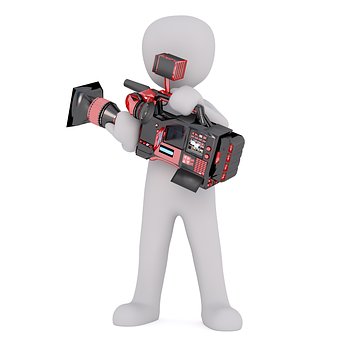
Use natural sound to bring your visuals to life.
Most corporate video productions consist of several main audio elements: voiceover (narration or on-camera), music, SFX, and natural sound. Natural sound is often the most overlooked of the four. You will find a lot of time and preparation being spent on placing a microphone. What microphone should you use? Where will you place it? Do you have the right batteries? Do you have backup batteries? But rarely will you find a crew giving this much time to capturing natural sound.
You may not notice it, but atmosphere plays a vital role in a good corporate video. Whether it’s a documentary or narrative, watching a scene where you can clearly hear what’s going on in the environment helps bring the visuals to life and makes you feel like you’re inside the story with the characters. When mixed properly with SFX, music, and narration, natural sound serves as a powerful filmmaking tool.
Even if you have a wild mic recording while you’re shooting, go back and devote time to recording natural sound.
With a few simple steps, you can capture great natural sound during your next production. Here are four tips & tricks for capturing natural sound:
1. Use a wild mic
The wild mic often refers to an internal microphone on your camera, or some other secondary microphone recording atmosphere. The wild mic often serves as a backup microphone. For instance, if a wireless lavalier mic drops out or a battery dies during an interview, you can use audio from your wild mic to save your final mix. Since most people use the wild mic as a backup to their primary mic, it is usually set to automatic gain and just left alone. A wild mic is great when you’re shooting solo in a run-and-gun situation as well, even when you can’t manually ride audio levels. Just slap a directional mic on top of the camera, set it to auto, and shoot.
2. Record room tone for interviews
It’s good practice to record room tone both before and after an interview. Various sounds can crop up during an interview, whether it’s a loud air conditioning unit or a lawn cutter buzzing around in the distance. The common method is to record 60 seconds of room tone with all of the microphones, both your lavaliers and your boom microphones. Capturing room tone will help you not only capture the ambient sounds, but also allow you to capture a noise print during post and mix out unwanted background sounds.
3. Allow time to capture natural sound
While shooting b-roll, pay attention to your visuals. While conducting interviews, listen for possible sound bytes. Think about the corresponding sounds that could work well with your images and sound bytes. Even if you have a wild microphone recording while you’re shooting, go back and devote time to recording natural sound. In a perfect world, use a sound engineer who can go out and spend time capturing natural sound elements to use in your final edit.
4. Create a natural sound audio track
During the post-production process, label one or two of your audio tracks Natural Sound. Spend time layering and mixing in ambiance and natural sound elements. While this will lengthen your editing time, adding natural sound will bring your production to the next level. Much like a good edit should go unnoticed, the natural sound should weave in seamlessly. Viewers may not notice it, but the natural sound will help to bring them into the world of your story.
Have any sound tips to add? We’d love to hear them in the comments.
We are from corporate film makers if you need such services then let us know.


